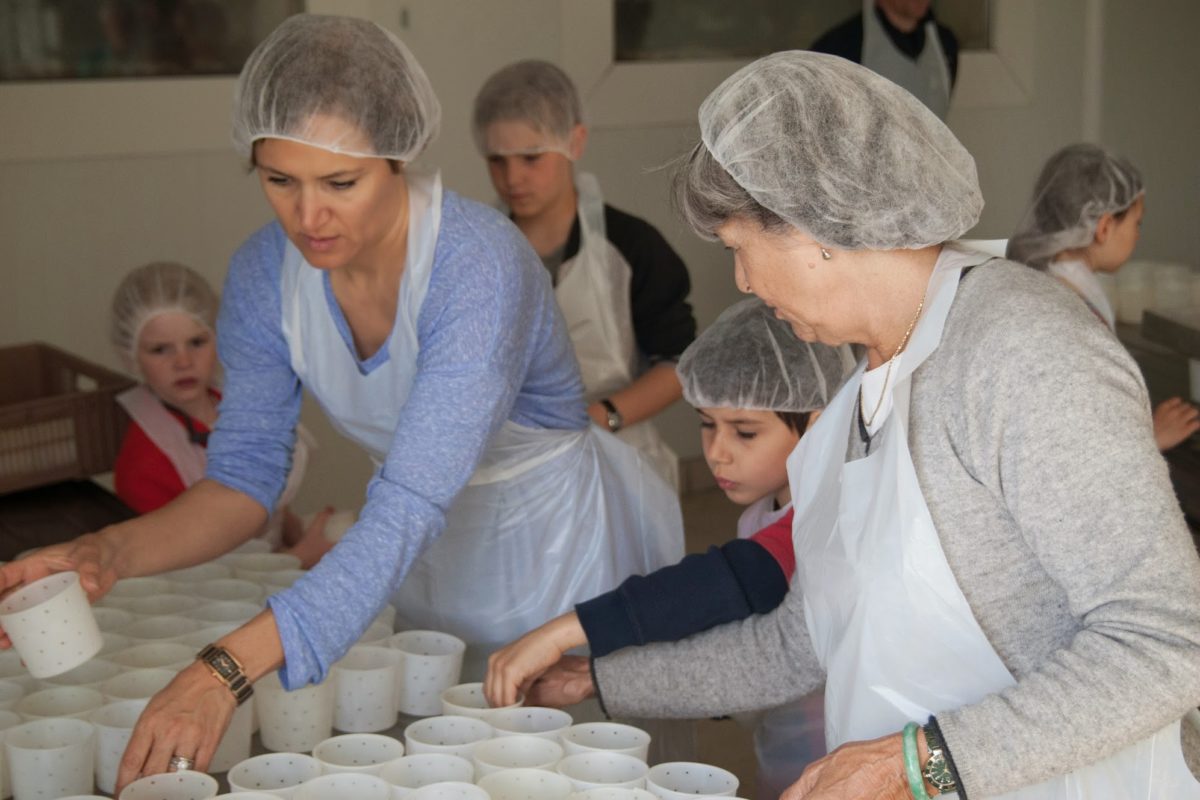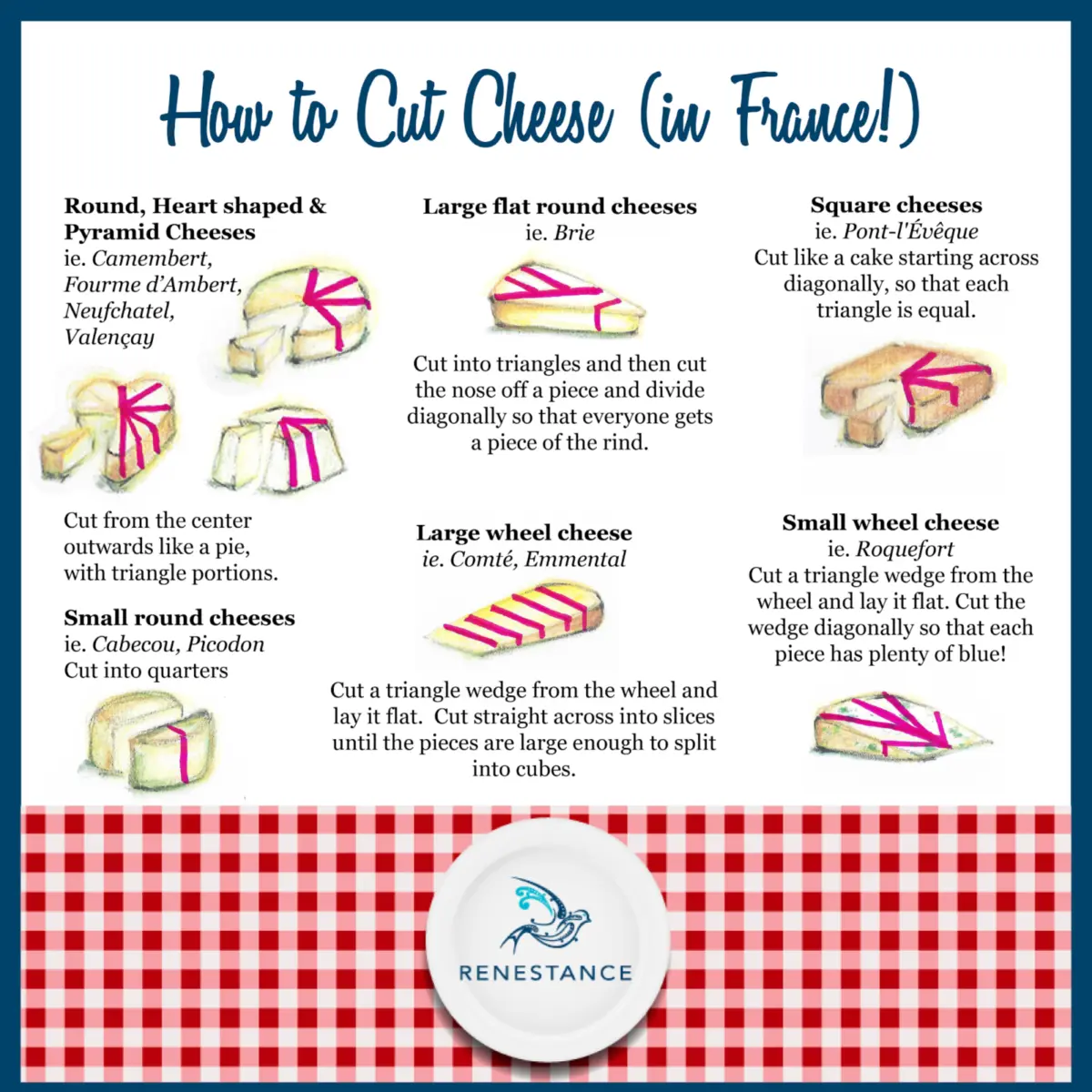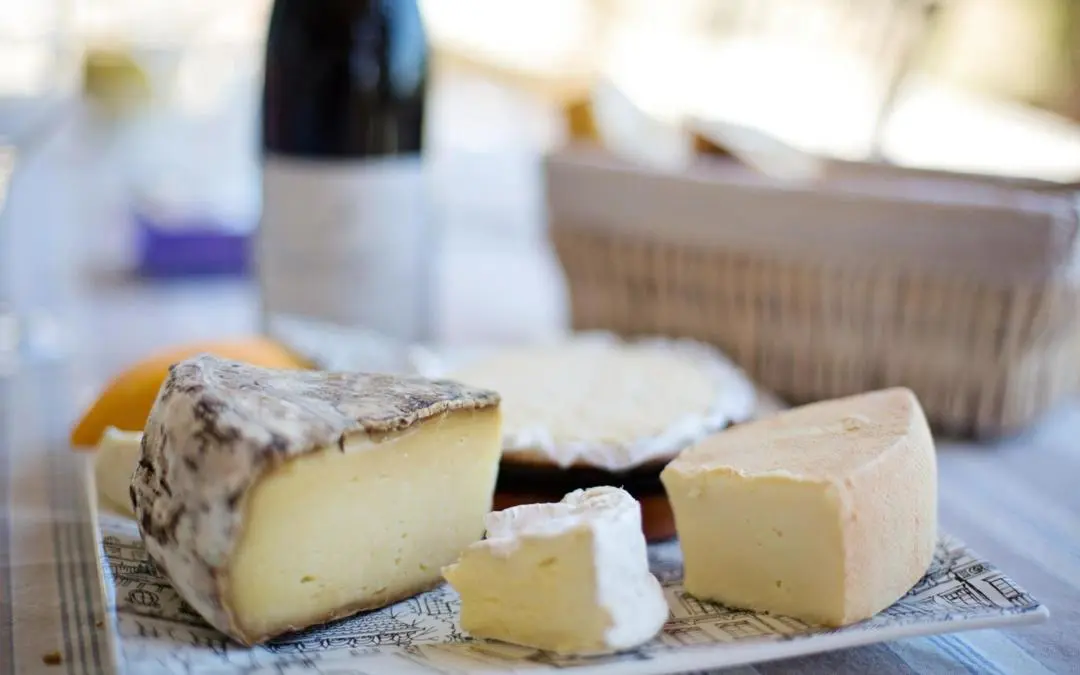France is the cheese capital of the world! There are officially between 350-450 types of French cheese, about 600 cheeses in production and further regional variations of each type, meaning the actual number is closer to at least 1000. Let us guide you through some of them!
Similar to fine wines, 56 cheeses are classified, protected, and regulated under French law. The majority of these are classified as Appellation d’origine contrôlée (AOC), the highest level of protection.
Le Fromage – love it or hate it?
It seems there isn’t a middle ground on appreciation of cheese, and evidently all of the Renestance team love it! Given a classic menu choice of cheese and/or dessert we’d always opt for both!
We all have different favorites too; Dennelle prefers stinky cow’s milk cheeses Livarot, Chaumes, Pont l’Evêque; Alex likes Pelardons and Jen prefers Rocamadour (both goat’s milk cheeses), Nicole likes a strong hard cheese made with unpasteurized milk such as Comté and as for me, I am extremely partial to a piece of Saint-Nectaire.
Types of French Cheese
According to the excellent book ‘French Cheeses’ by Randolph Hodgson, the categories of French cheese are :
- Fresh, rindless, no affinage (ie. Fromage frais)
- Uncooked, unpressed, soft with white mould (ie. Camembert)
- Uncooked, unpressed, soft with washed rind (ie. Munster)
- Uncooked, unpressed, soft, natural mold sometimes covered with ashes (ie. Chèvre)
- Uncooked, unpressed, soft, with veins of blue mold (ie. Bleu)
- Uncooked, unpressed, semi-hard with natural mold (ie. Saint-Nectaire)
- Uncooked, unpressed, semi-hard, with washed and waxed rind (ie. Port-Salut)
- Cooked, pressed, hard : (ie. Beaufort)
- Started with whey (ie. Brocciu)
- Product based on cheese : (ie. Fromage fort)
Geographically, you will find many of the creamiest and strongest cheeses are made from cow’s milk in Normandy, and the southern regions such as Languedoc are well known for their Chèvre (goat’s milk cheeses).

Dennelle with her mother and son making goats cheese in the Lozère
Lait cru cheese – is it safe?
Lait cru means unpasteurized milk, and you’ve probably been eating unpasteurized cheese most of your life. Although not French, Parmesan is always made with unpasteurized milk (the Italian decree insists on it) as are French cheeses Roquefort and Comté.
Many cheese aficionados claim that lait cru cheeses can’t be beaten. On the other hand, people are warned against eating unpasteurized cheeses because they are not safe, especially for pregnant women.
The long and the short of it is that cheese-making is designed to take a product that spoils quickly (milk) and make it suitable for long term storage. A hard cheese like Comté, with a very low moisture content, is safe regardless of pasteurization. In bacterial terms, ‘higher-risk’ cheeses are those with high moisture contents, such as washed-rind cheeses or soft, mold-ripened cheeses like Brie and Camembert.
Pasteurization doesn’t affect how long you can ‘keep’ a cheese either – a drier unpasteurized cheese like Mimolette will always keep longer than a pasteurized moist cheese like Brie.
Cheese etiquette
Simply liking cheese is only part of the story. Here in France there’s an unwritten code on how to serve and eat your cheese! For example:
- Cheese is served after the main course and before dessert
- A cheese board (plateau de fromage) usually has at least three cheeses to choose from (usually 1 of each type – soft, hard, goats, blue, strong. Depending on which region you’re in you may also get a ewe’s milk cheese such as Ossau Iraty in the Bearn/Basque area in the SW)
- Where a selection of different cheeses are offered, they should be eaten in order of strength – ie mildest to strongest flavor
- Traditionally a cheese board is only offered round the table once (no grazing!)
- Cheese is not a meal, it is one course as part of a meal – do not invite French people to dinner and only offer them cheese!
- There is no need to serve crackers and chutney – cheese is simply served with bread, and sometimes with a sweet jam such as fig or cherry
- Cheese does not necessarily taste like it smells – don’t let a pungent odor put you off – it might actually taste delicious!
- Always serve cheese at room temperature
- Loosely wrap cheese and store it in a cool area, but ideally not a fridge
- Many hold the view that red wine should always be served with cheese. That’s not strictly true as sweeter white wines can be much better suited to blue cheeses, and cider can be very good match for a creamy cheese like Camembert
- Depending on its shape, each cheese must be cut according to specific rules – this is extremely important to avoid looks of horror from your hosts! (see the Thoughts & Cream graphic below)

Image by Annette Morris for Renestance
There is plenty more we could tell you about French cheese, but the best way to discover your own favorite is to find a local market and start tasting. Bon appetit!
Annette is Renestance’s 'go to' girl for all things marketing and social media. Bilingual and originally from Surrey in the UK, Annette has lived in France since 2008. In addition to her web design and marketing consultancy, Annette is the founder of Languedoc Jelly (a network of free events across the region for anyone working from home) and also Urban Sketchers Languedoc (part of a global community of people that like to draw or paint on location). A fan of all things French and Franglaise, she also has a Citroen 2CV called Beryl.
All articles by: Annette Morris



Love this Annette. We will be sketching the 10 most famous cheeses of France next year (with their labels) at our Chateau experience with you – I hope.